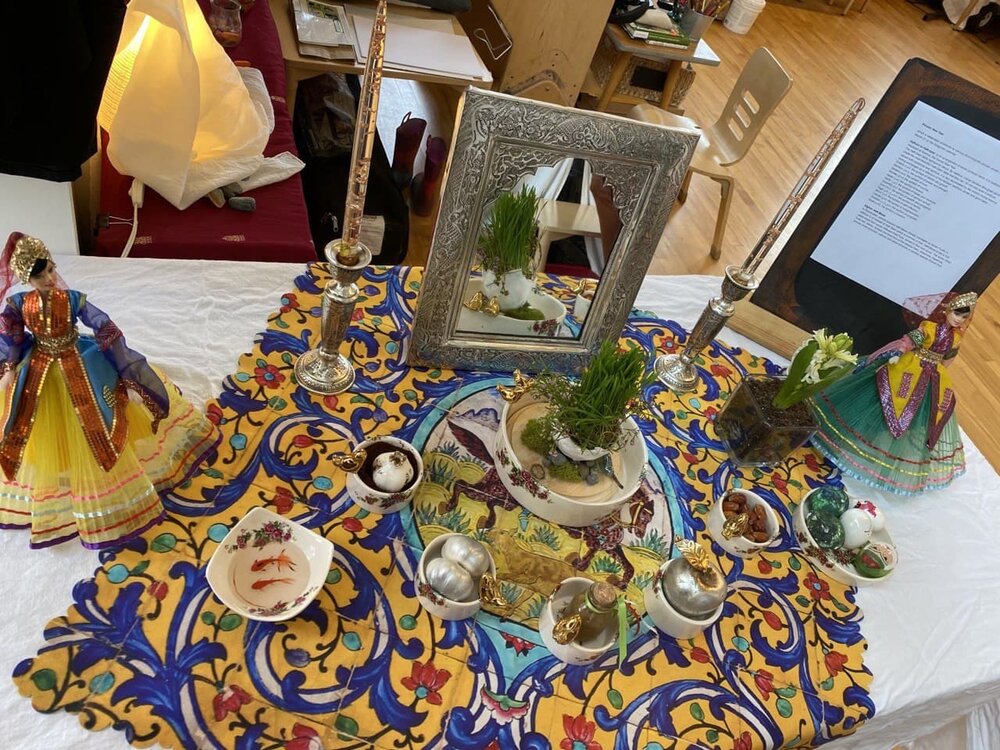Persian New Year: Nowruz Mubarak!
Persian New Year is celebrated worldwide by various ethno-linguistic groups, usually on March 21 on the Gregorian calendar.
This year, Cedarwood parents Faith Kord and Hameed Noei have set up a beautiful Haft-Seen table to share this special celebration with our community!
Haft-Seen or Haft-Sin is an arrangement of seven symbolic items, traditionally displayed at Nowruz, the Iranian New Year. The Haft-Seen table represents nature. By tradition, Iranian families take great pains to create the most beautiful Haft-Seen table that they can, for not only does it embody values both traditional and spiritual, it is also appreciated by visitors during Nowruz visiting exchanges as a reflection of the families’ aesthetic sense and good taste.
Greens (سبزه): the symbol rebirth & growth
Samanu (سمنو): the symbol of power & strength
Senjed (سنجد): the symbol of love
Somāq (سماق): the symbol of sunrise
Apple (سیب): the symbol of beauty
Garlic (سیر): the symbol of health and medicine
Hyacinth(سنبل): the symbol of spring's arrival
Coin (سکه): the symbol of wealth and prosperity
Eggs (تخممرغ رنگی): the symbol of fertility
Mirror (آینه): the symbol of self-reflection
Candle (شمع): the symbol of enlightenment
Goldfish (ماهی قرمز): the symbol of progress
Book (کتاب): the symbol of wisdom
In Afghanistan, people prepare Haft Mēwa (literally translates at “Seven Fruits”) in addition to or instead of Haft-Seen, which is more common in Iran. Haft Mēwa is like a fruit salad made from seven different fruits, served in their own syrup. The seven dried fruits included are: raisins, senjed (the dried fruit of the oleaster tree), pistachios, hazelnuts, prunes (dried apricots), walnuts, and either almonds or another species of plum fruit.
Thank you to Faith & Hameed for sharing these traditions with Cedarwood! Nowruz Mubarak!




